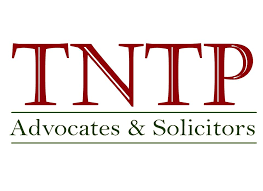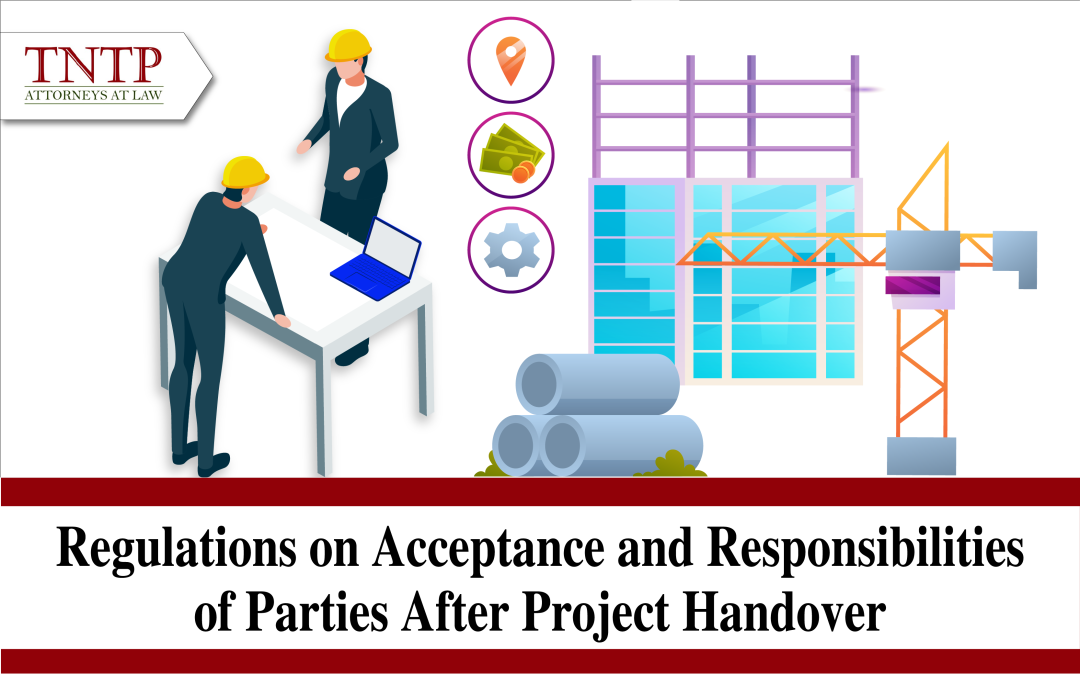In construction, the acceptance and handover of a project is a crucial step to confirm that the project has been completed and complied with technical requirements, ensuring quality and compliance with contract terms. After the project is handed over, the parties’ responsibilities also shift according to legal provisions and the agreements outlined in the contract. In this article, TNTP will clarify the regulations regarding project acceptance and the parties’ responsibilities after project handover.
1. Regulations on project acceptance
Project acceptance is the process of evaluating and inspecting all components and structures to confirm that the project has been fully completed, and meeting technical standards and safety requirements before being put into operation. According to the Construction Law 2014, the investor is responsible for organizing the acceptance of the construction project, and the organizations or individuals involved in the acceptance process are accountable for the quality of the work they confirm during acceptance. The project acceptance process must adhere to the following principles and procedures:
• Project acceptance in construction is regulated under Article 123 of the Construction Law 2014, which includes: acceptance of work during construction and construction transition stages when necessary, and acceptance of completed project components and the overall project before putting it into operation.
• According to Decree No. 06/2021/ND-CP on the management of construction quality, construction, and maintenance of construction works, depending on the characteristics and conditions of each project, the investor and contractors may agree on specific acceptance procedures, including acceptance of construction phases or parts of the project.
Before putting the project into operation, the investor is responsible for organizing and directly participating in accepting all project components. However, if the project still has certain deficiencies but the construction has been basically completed as designed, and the deficiencies do not affect the structural integrity, lifespan, functionality, or safety, according to legal regulations, the investor may decide to conduct conditional acceptance to temporarily put the project or the accepted part into operation.
If part of the project has been completed and meets the conditions, the investor may accept that part for temporary operation. The acceptance results must be confirmed in writing. The investor must continue construction and accept the remaining parts, ensuring safety and not affecting the already operated components.
2. Responsibilities of the parties after project handover
The handover of a construction project is regulated under Article 27 of Decree No. 06/2021/ND-CP, which states that the project must meet the following requirements: the project has been accepted and it ensures safety during operation.
The investor is responsible for receiving the project in accordance with the contract, and individuals, organizations involved in the handover must be accountable for the quality of the work they confirm. If the investor is not the project manager, the investor must hand over the project to the managing unit after acceptance, and the handover must be documented in writing.
After the project is handed over, the responsibilities of the parties are specified in the construction contract and current legal provisions. Below are some main responsibilities of the parties:
a) Responsibilities of the investor and project manager
• Payment: After receiving the handover, the investor is responsible for paying all or the remaining portion of the costs as stipulated in the contract. This includes any additional agreed-upon costs (if any) and secured payments to the contractor. Additionally, during the project warranty period, the investor is responsible for inspecting and accepting the contractor’s warranty work.
• Preservation and use of the project: After handover, the investor, owner, or manager is responsible for preserving and using the project for its intended purpose.
• During the construction warranty period, if any defects or damages are discovered, the investor, owner, or manager must notify the investor to request the construction contractor and equipment supplier to carry out warranty work. The owner or manager must also participate in confirming the completion of warranty work when requested by the investor.
• Responsibility for project quality: After acceptance, the investor is responsible for the project’s quality if any issues arise during usage that are not caused by the contractor or supplier.
b) Responsibilities of the contractor
• Rectification of Acceptance Errors: If any defects or unmet technical requirements are identified during acceptance, and the project has not been accepted, the contractor is responsible for rectifying these issues.
• Project Warranty: After handover, the contractor is obligated to provide warranty services in accordance with legal regulations and the contract. The warranty period is typically agreed upon in the contract and varies depending on the type of project.
When the warranty period ends, the contractor must submit a report of warranty completion to the investor, and the investor must confirm the completion of the warranty and release the warranty bond (or release the guarantee letter) if the requirements have been met.
Contractors responsible for surveying, designing, constructing, and supplying equipment, along with other related contractors, bear responsibility for the quality of the work they have completed, even after the warranty period ends.
c) Responsibilities of the design and supervision consultants
• Consultation During Warranty and Maintenance: The design consultant is responsible for assisting the investor and contractor in addressing design errors, if any, and proposing repair solutions during the warranty period.
• Design Responsibility: If any issues arise related to design errors, the design consultant must be held responsible and work with the contractor to resolve them. They must ensure that drawings and technical documents are comply to the appropriate standards and regulations.
• Supervision of Warranty Work: If stipulated in the agreement, the supervision consultant continues to monitor the contractor’s warranty and repair work to ensure that warranty tasks are carried out with proper quality.
Project acceptance and handover are critical steps in the construction process, requiring strict compliance with legal regulations and contract terms. Investors, contractors, and other related parties must fulfill their responsibilities after the handover to ensure the project’s quality and minimize potential disputes. A clear understanding of the parties’ responsibilities and rights after the handover will facilitate a favorable and efficient project management.
This concludes the article “Regulations on Acceptance and Responsibilities of the Parties After Project Handover,” presented to you by TNTP. We hope this article proves helpful to our readers.
Respectfully,








